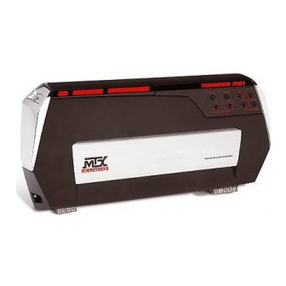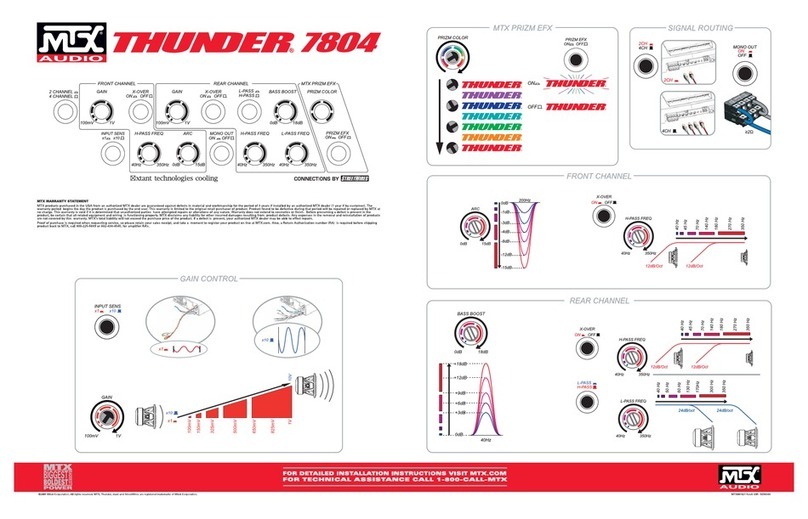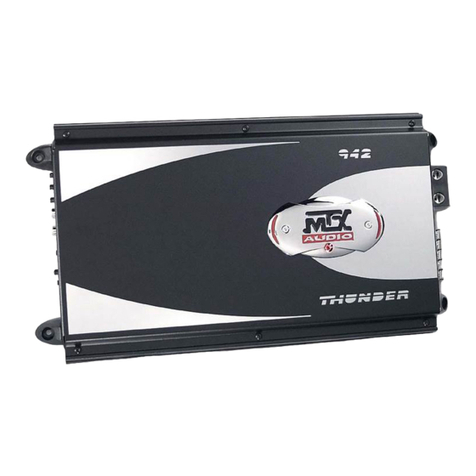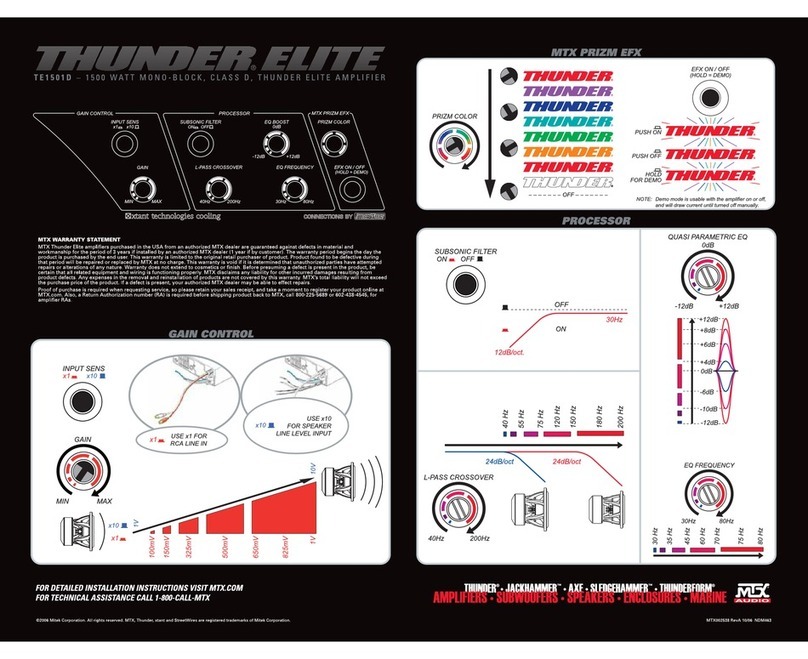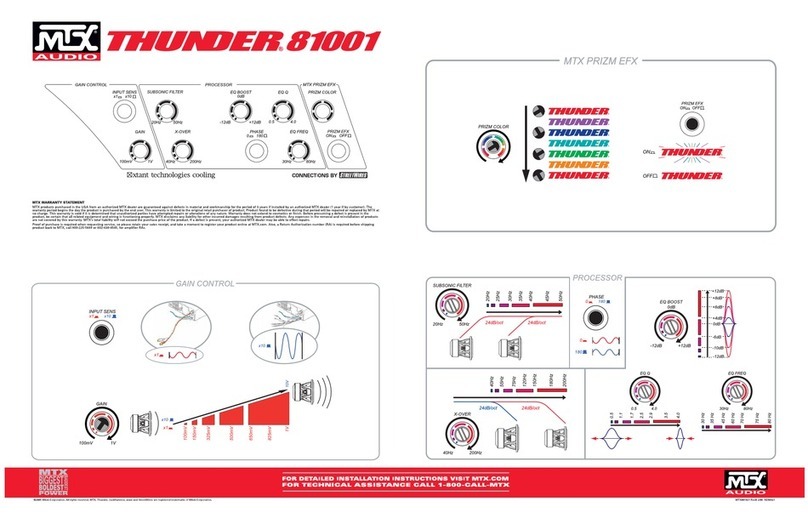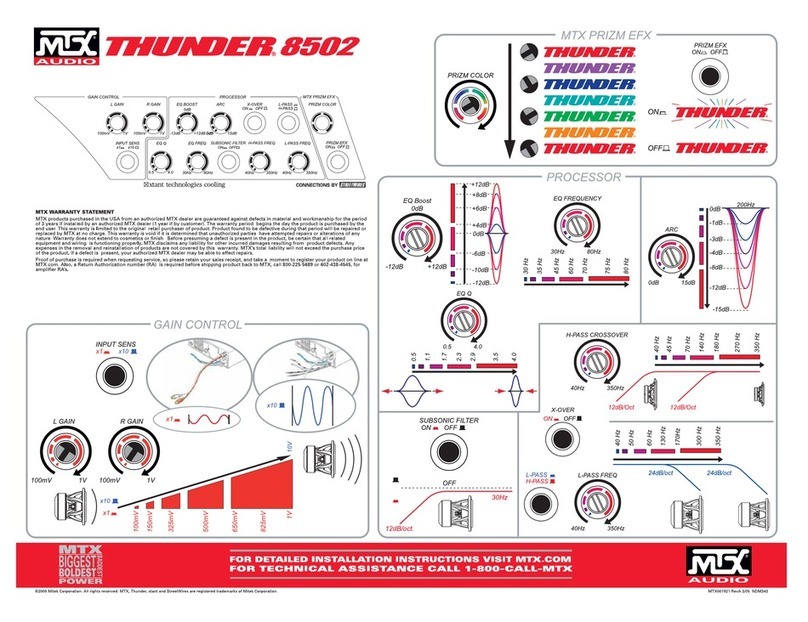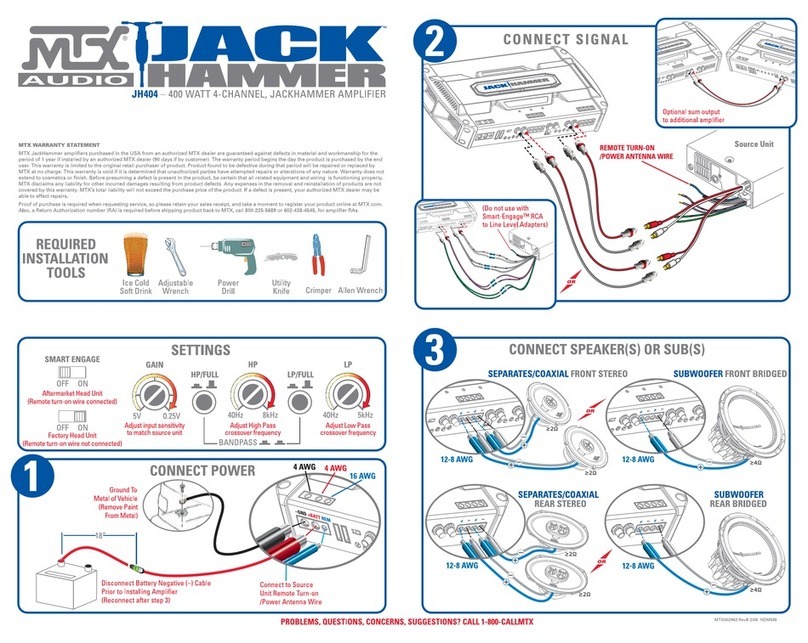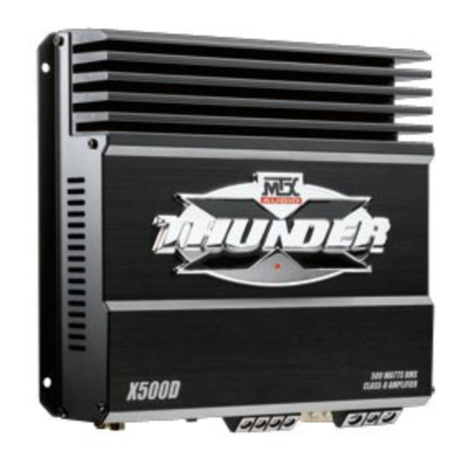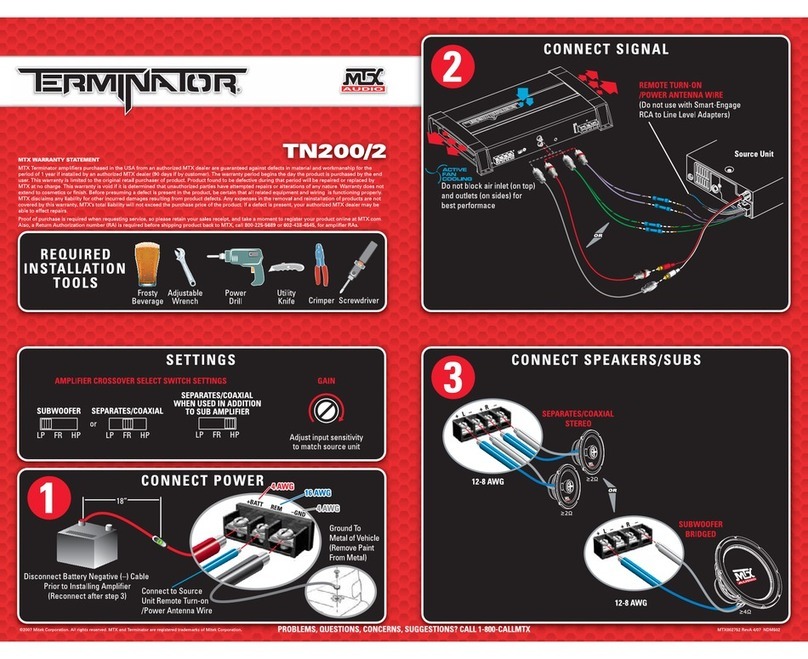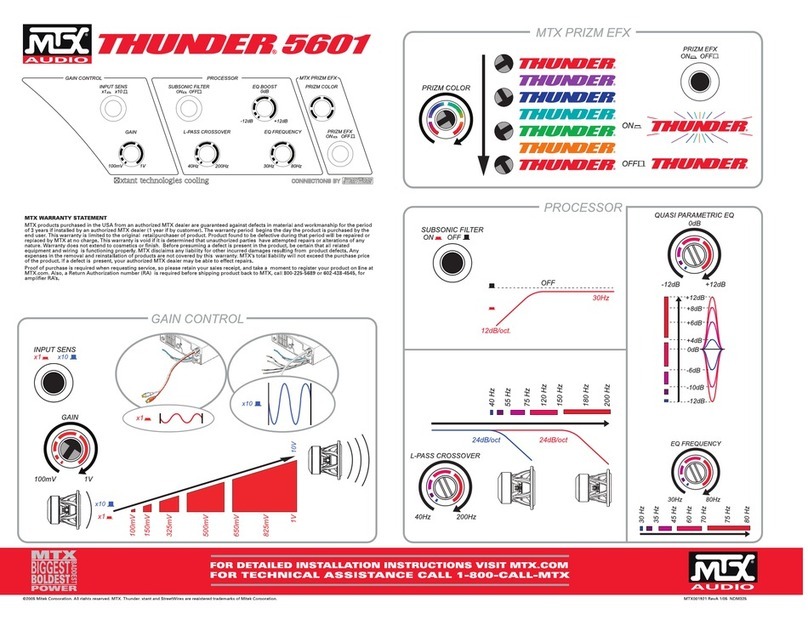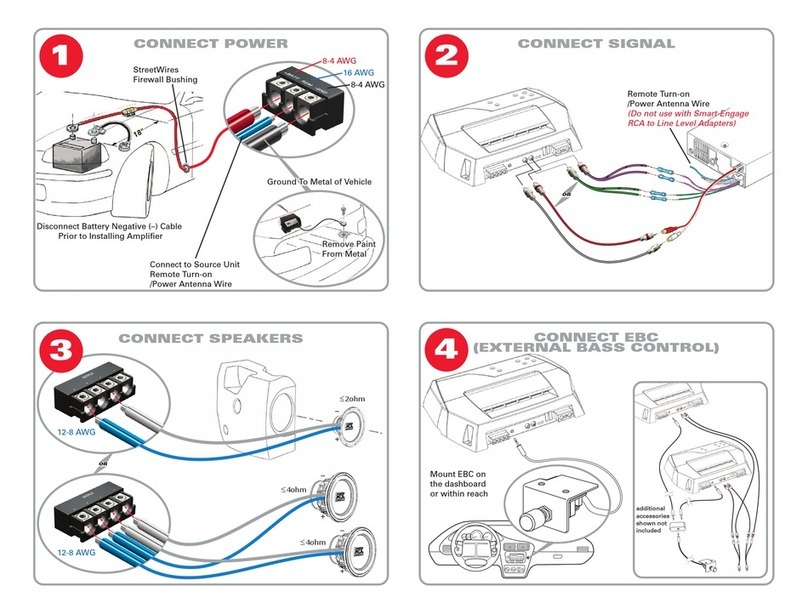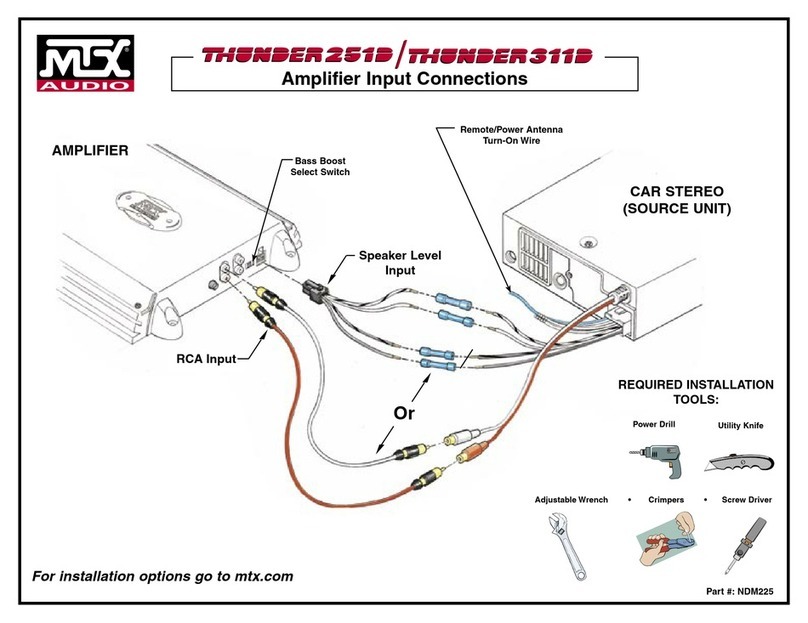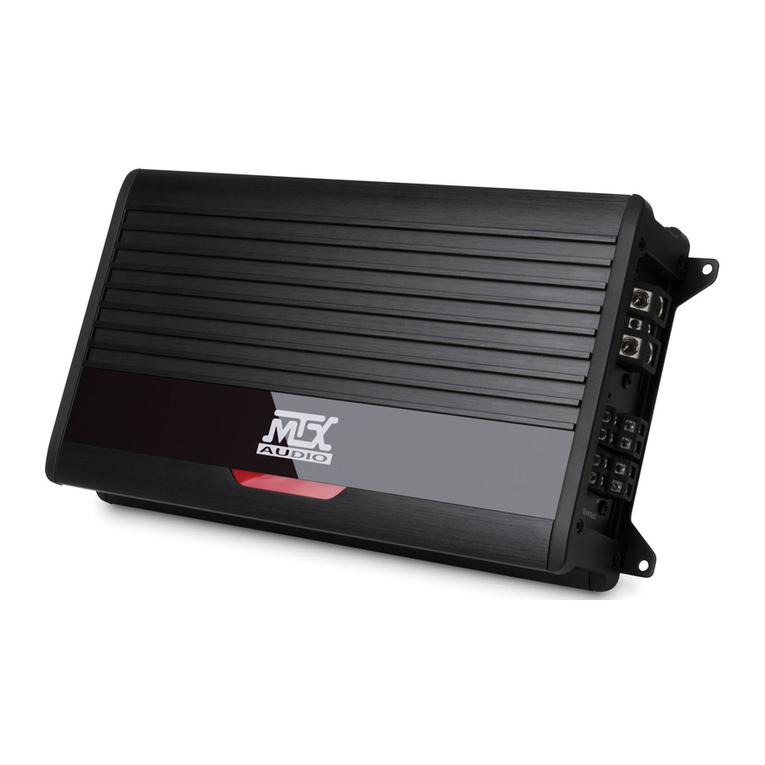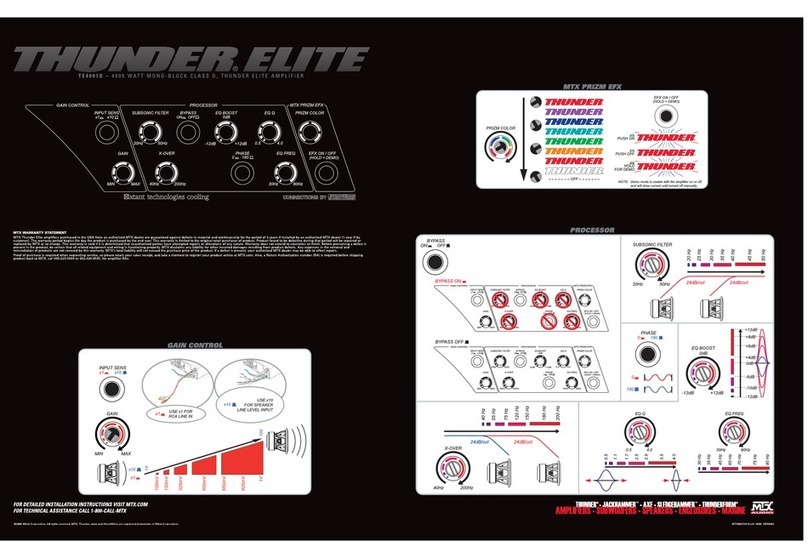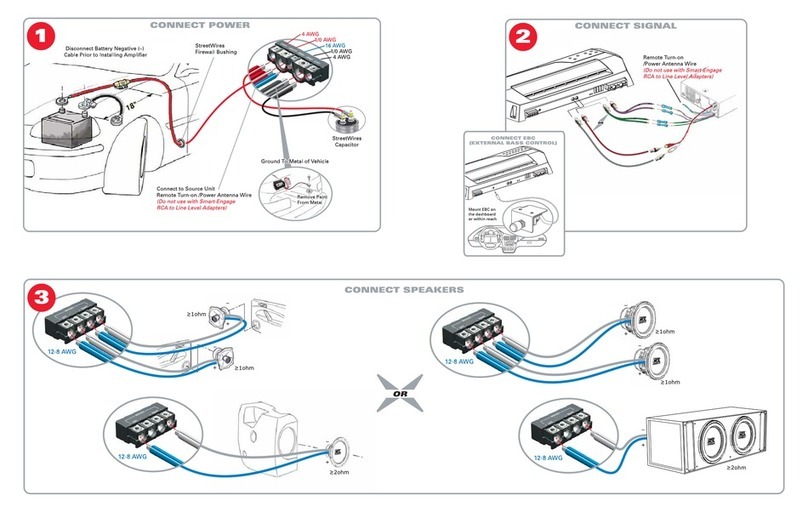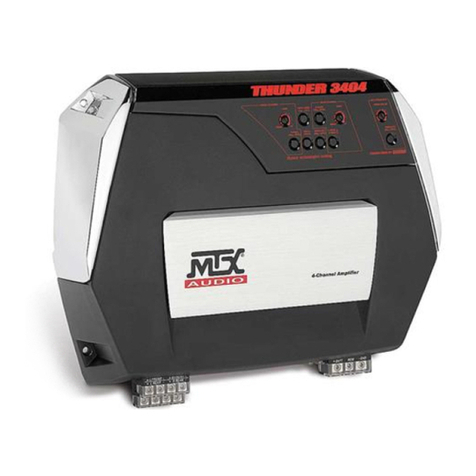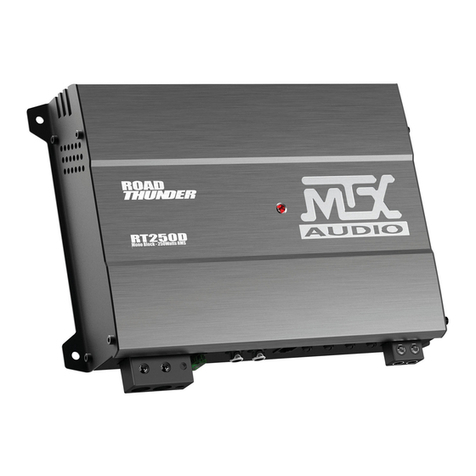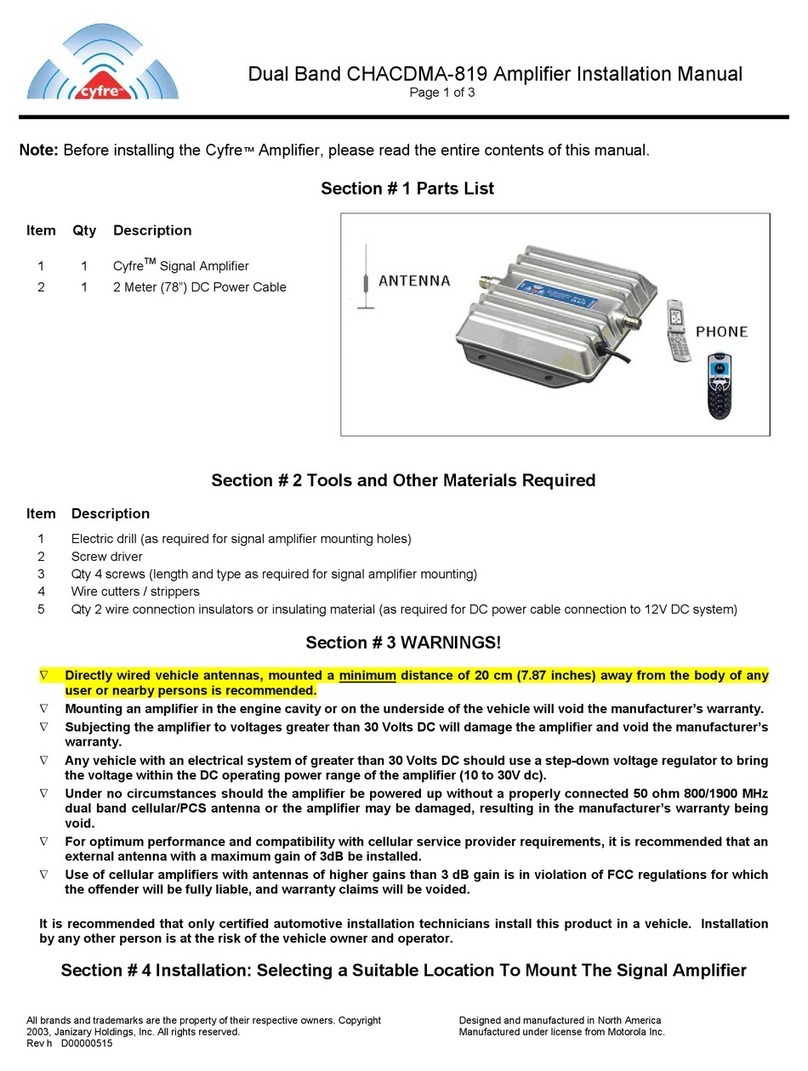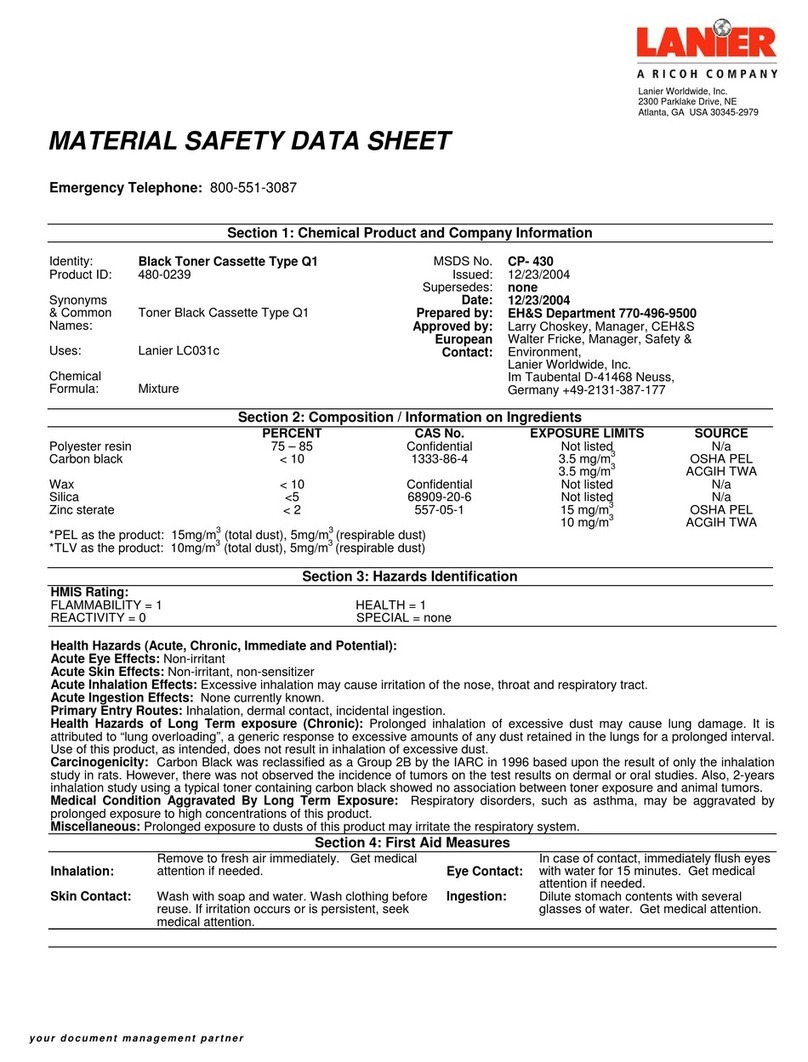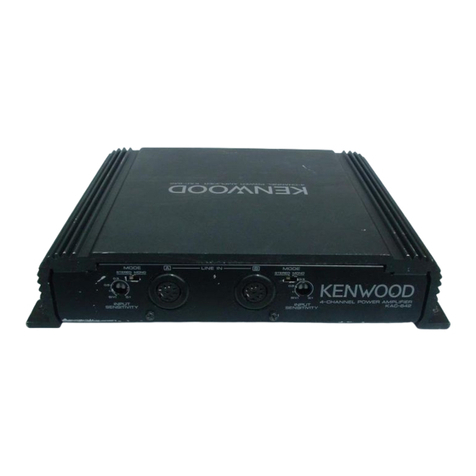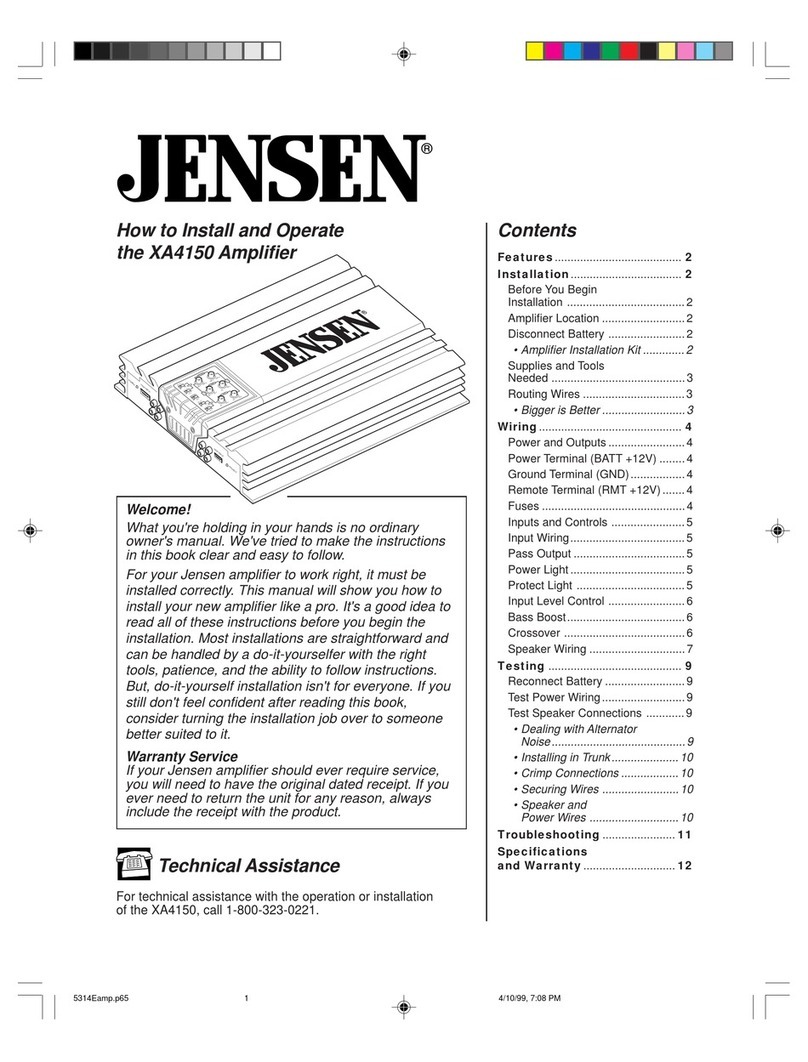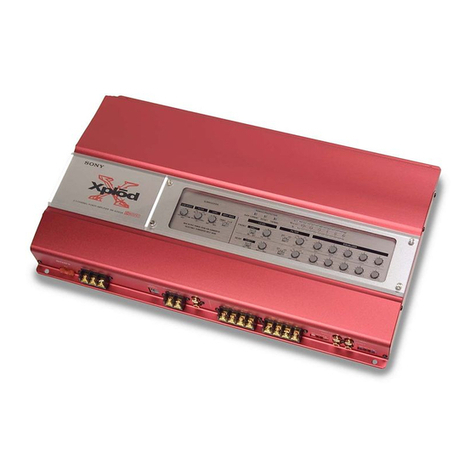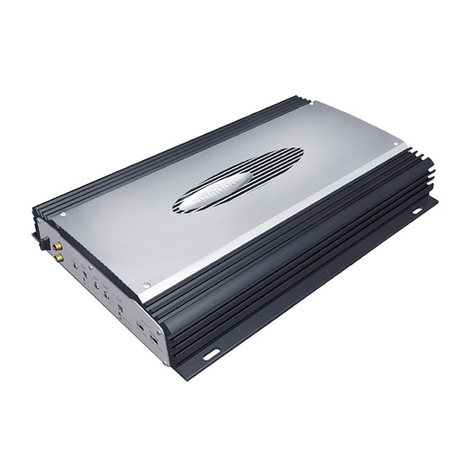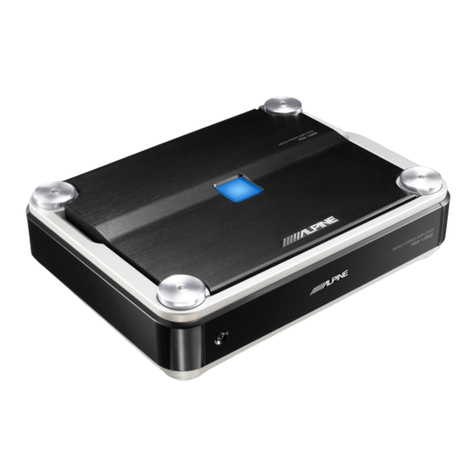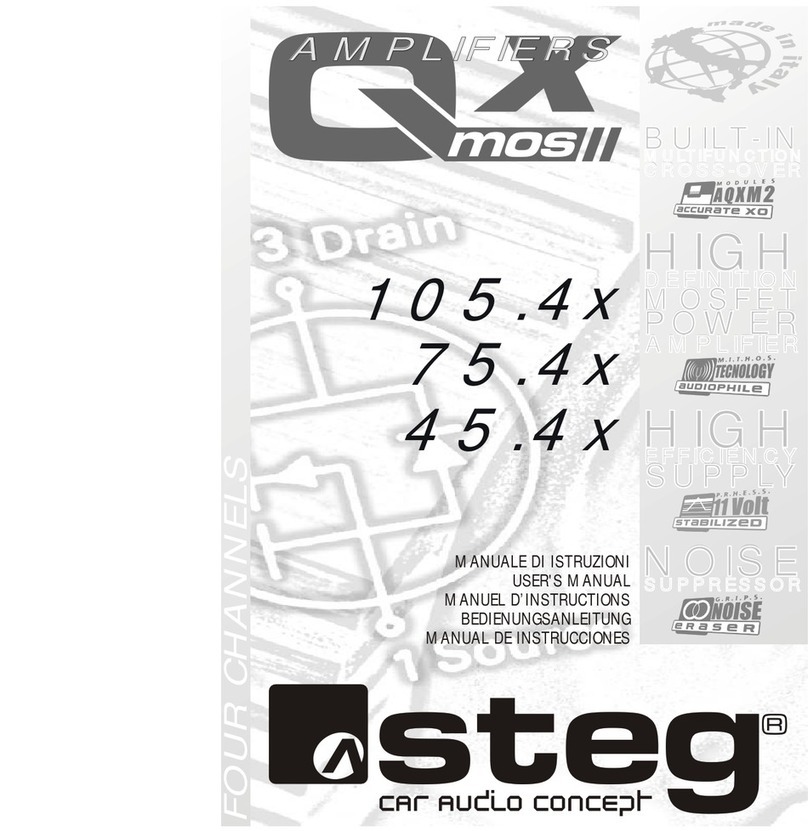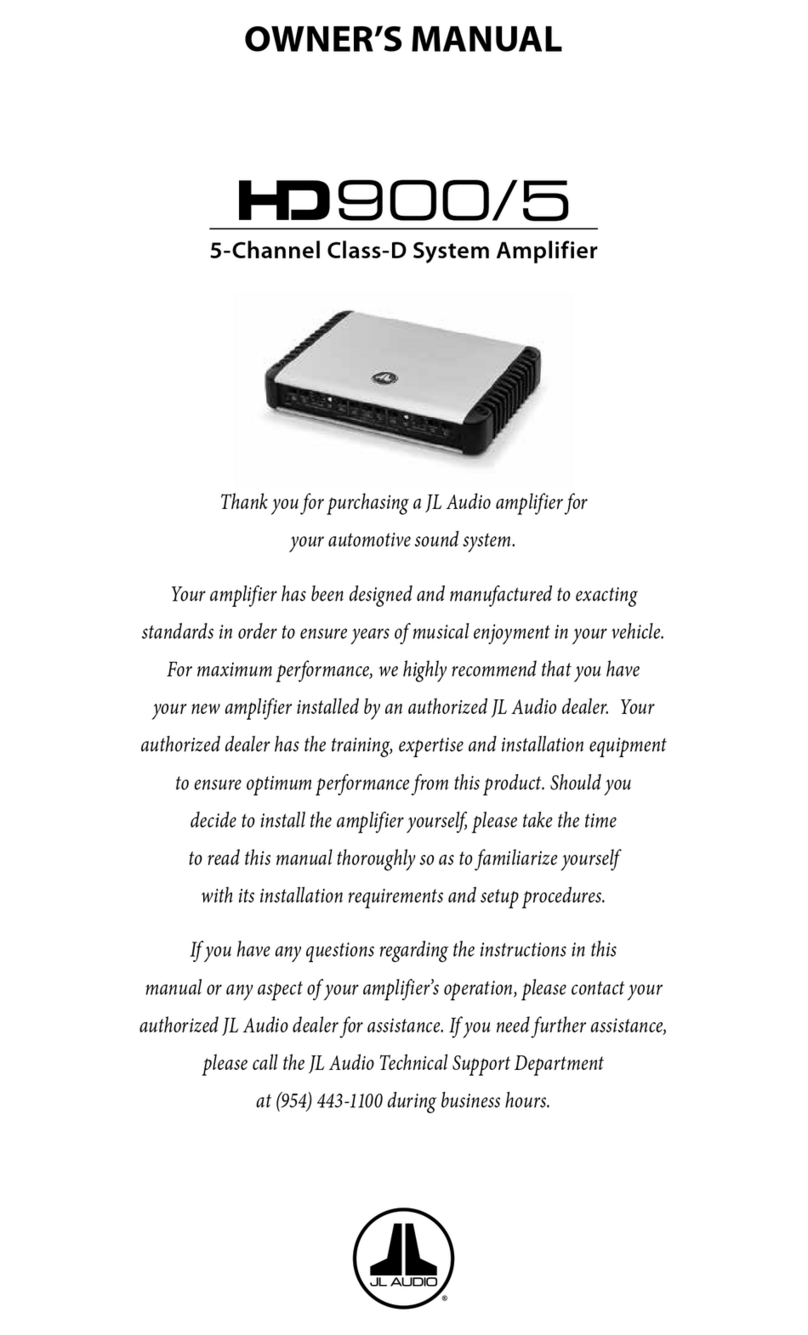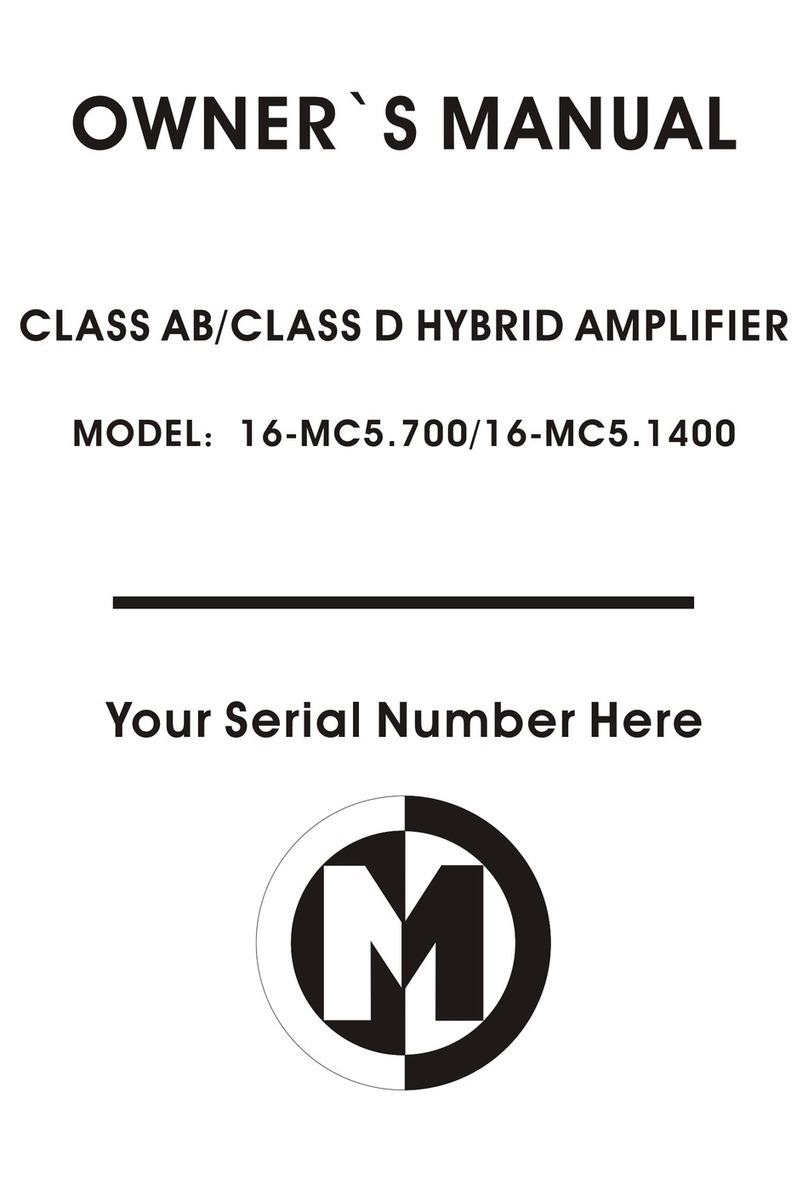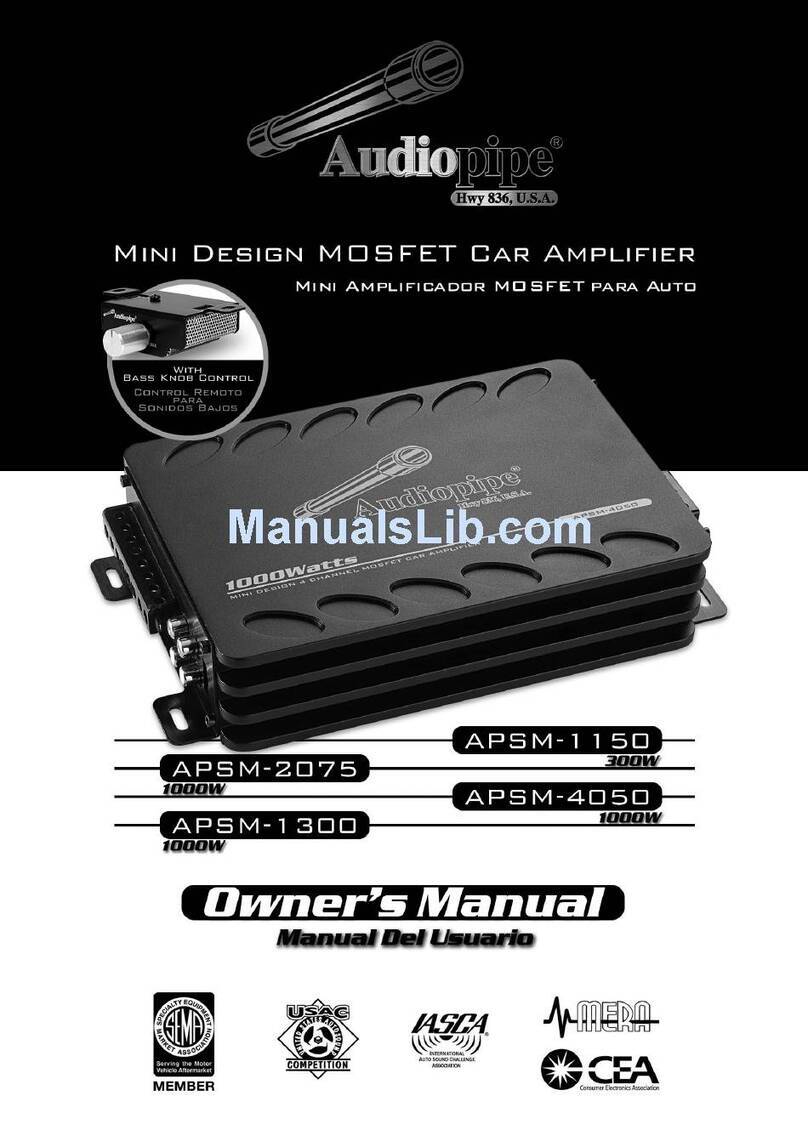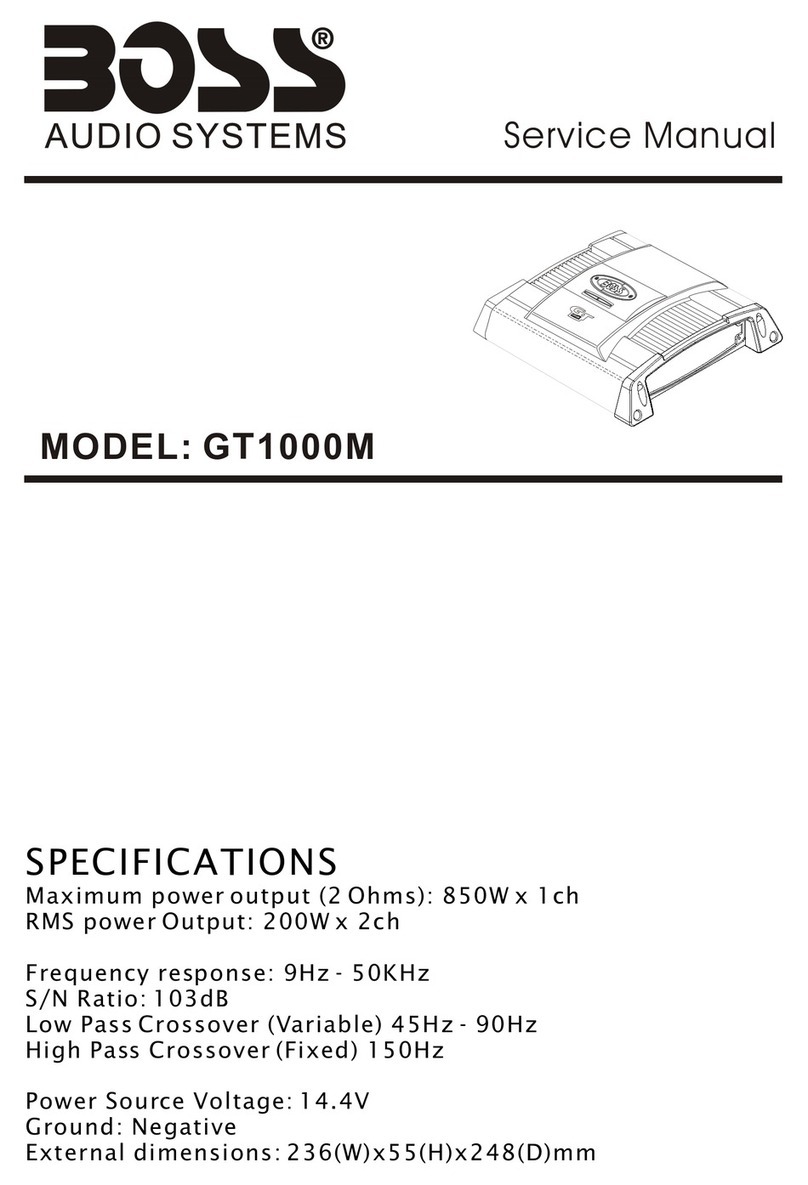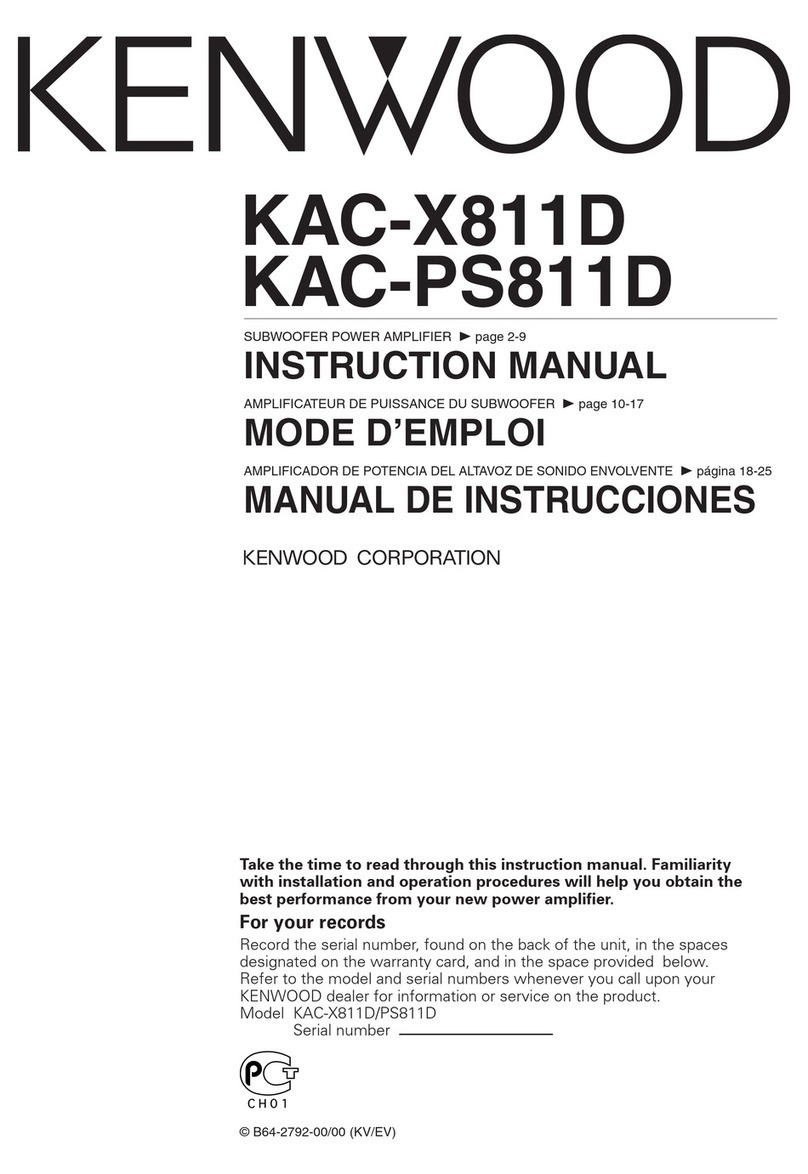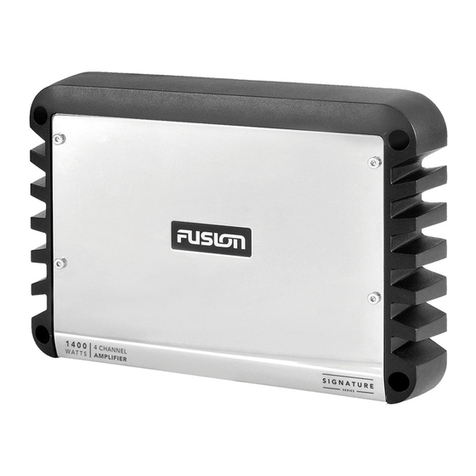
Connections
1. Bi-Level Inputs (Low/High Level Input) with Smart Engage™ – Both a low and high level signal can be used.
Be sure to lay the signal wire away from all power cables and vehicle computers. Use high quality twisted pair
interconnect cables to decrease the possibility of radiated noise entering the system.
• Using RCA Connections: If the source unit has RCA outputs, simply attach a signal cable from the source unit
to the amp’s RCA input. This will provide signal to the amp.
• Using Speaker Level Connections: If the source unit does not have RCA outputs, a high level signal can be
used instead by taking the supplied high level RCA adapter cables and connecting the bare wire ends to the
vehicle’s rear speaker wiring. Connect the left negative speaker wire to the green with black stripe wire on the
supplied high level RCA adapter. Connect the left positive speaker wire to the solid green wire. Do the same
for the right speaker connection using the purple wire. Now plug the RCA connectors located on opposite
end of the supplied high-level RCA cables into the amp’s inputs. When connecting the front channel, use the
included grey and white high level RCA adapter cables. The grey wire is used for the front left and the white
wire is used for the front right.
2. Speaker Wire Connections –
When installing the speaker wires, please take proper measures to protect them. For example, when
connecting the door speakers, the speaker wire should run from the amplifier’s output terminals, under the
carpet, and through the factory rubber boot (loom) that protects the wires in the inner door jam. If the factory
boot cannot be used, take other measures to protect these wires. Sometimes the door has to be completely
removed to use the factory boot. If this is something that you do not feel comfortable doing, please ask a
professional to help you.
When connecting the speaker wires to the amplifier please observe the printed polarity markings on the
amplifier’s StreetWires connector. Failing to wire the speakers in proper phase could result in a loss of bass
response or poor overall sound quality.
These amps will have eight speaker terminals: front left positive, front left negative, front right positive, front right
negative, rear left positive, rear left negative, rear right positive, and rear right negative.
• Stereo (4-channel) Connection: This configuration is typically used with full range or high frequency
speakers. Each channel can drive a minimum of a 2 ohm load.
• Front Stereo/Rear Bridged (3-channel) Connection: This configuration is typically used with full range
speakers connected to the front outputs and subwoofer(s) connected to the rear outputs. Each front channel
can drive a minimum of a 2 ohm load. The rear bridged configuration can drive a minimum of a 4 ohm load.
• Bridged Front and Rear (2-Channel) Connection: This configuration is typically used with subwoofers. Both
the front and rear outputs can be bridged individually and each can drive a minimum of a 4-ohm load. No
front and rear gain matching is required if the Dual Mono feature is on. Use the rear gain control only for
adjusting the gain for all channels.
• Dual Mono (1-Channel) Connection: This configuration is typically used with subwoofers. All channels can
be combined for max power (both the front and rear outputs can be bridged together) and can drive a
minimum of a 2-ohm load. The Dual Mono feature is must be on. Use the rear gain control only for adjusting
the gain for all channels.
Note: Please pay attention and make sure the speakers or woofers are the correct IMPEDANCE (OHMS) BEFORE
attaching to the amplifier.
3. Power Terminals – When installing the power wires, please take proper measures to protect them as
best you can. For example, when running the power cable from the vehicle’s battery through the firewall,
use a firewall bushing for protection. Continue running the power wire through the interior of the vehicle
under the carpet and to the amplifier. If this is something that you do not feel comfortable doing, please ask
a professional to help you. Be sure to lay the power wire away from all signal cables.
When connecting the power wires to the amplifier please observe the printed markings on the amplifier’s
StreetWires power connector. Failing to wire the power cables properly could result in amplifier damage.
• +12V: This is the main power input for the amplifier and must be connected directly to the positive
terminal of the car battery for the amplifier to operate properly. It is important that a main fuse is installed a
maximum of 18” from the battery.
• GND: This is the ground connection for the amplifier and must be connected directly to the metal chassis
of the vehicle for the amplifier to operate properly. A properly grounded amplifier can be run harder and
longer than a poorly grounded amplifier. The ground on the amplifier should be as short as possible and
be connected directly to the vehicle’s metal chassis. Do not connect to factory bolts of ANY kind. When
attaching the ground to the chassis, sand all the paint away from the contact point. A grounding block like the
